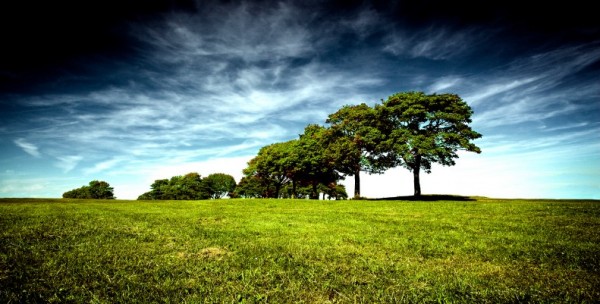Walking By Nature
Saturday, August 20th, 2016
“City life cuts you off from the seasons, but walking restores your awareness.“ – Joan Bakewell
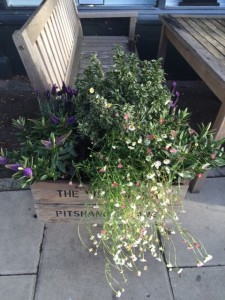
This weekend I am staying in Ealing on a city writing retreat hosted by the wonderful Clare Berry www.clarebarry.com It’s a perfect opportunity to unwind and spend chunks of time writing away from the distractions of life back at home.
I have fond memories of Ealing from childhood. In the sixties my Dad would drive my Mum, baby brother and me from South London in his bottle green Morris Minor car to the home of my godmother Aunty Eunice in Ealing.
At the time through my child’s eye their home was huge and even the pavements on the road they lived on were double the size of the slither of a road we lived on in Camberwell in London which may well have been one of the smallest streets in the whole of city. And to top off my idyllic memories the sun was always shining when we visited.
Now I am a half a century and more older the streets seem smaller in the Ealing suburb as do the houses but the energy of the place feels the same.
Sitting in the front reception room it is a while before I notice how quiet the area is compared to where I’ve lived for the last ten years. The moment reminds me that when we make time to get still the nature and vibration of a place speaks to us in many ways.
One way I get to know and really connect with the spirit of a place is by walking. Today as I head over the hill from the home I am staying in I am greeted with a wonderful view of the river Brent in the far distance. The river is a slim shimmering slit of silver from the naked eye but somehow its presence calms me knowing that water is nearby.
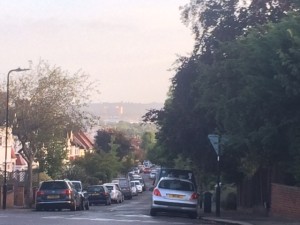
My host has drawn me a map. The wildness of a map hand drawn on paper rather than relying on Google maps heightens my sense of adventure. The night before I ask my host to point me in the direction of the nearby parks. Green spaces, what I call the lungs of a place always give me the heartbeat of the place and act as a natural compass to explore the area.
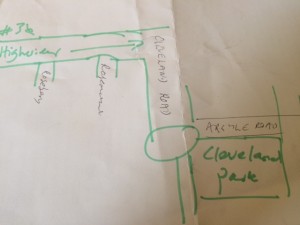
The roads I wander down are abundantly tree lined with assortments of red and orange geraniums in almost every other house or window box.
I walk for over ninety minutes and find myself winding down roads adorned with lovely cottages and front gardens showcasing huge plants like the cactus in the photograph below.
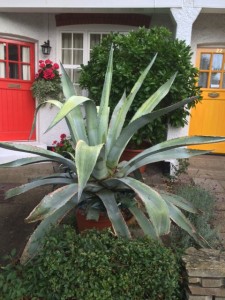
Walking accentuates the power of observation. It’s an ideal activity to sharpen and improve your writing skills because it allows you to really see in a way we don’t see and experience when travelling by car or transport.
Walking also contributes to the quality of your thinking. Both running and walking are incubators for the emergence of some of the best ever ideas and solutions for issues and dilemmas across my personal and professional life. What’s great is that it requires very little effort on my part.
The minutes flow by and I am lost on my meanderings. A good, long walk is always a great way for me to preparing to write. Well into my walk I catch sight of a notice board at the bottom of one of the long front gardens I am passing by. The kind you get in front of village churches.
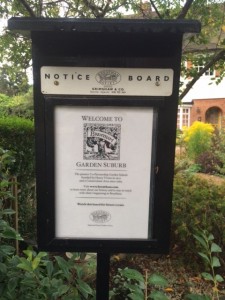
On reading I discover that I am in the heart of the Brentham conservation area. This is the reason why the gardens and plant life along these streets are so rich and vivid.
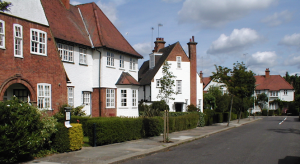
Here’s what it says on the website about the Brentham garden suburb:
Like a country village in the city, Brentham Garden Suburb is a little-known architectural gem in the midst of west London. The charming and distinctive estate of more than 600 homes and green spaces in north Ealing dates back to the early twentieth-century, when the Garden City movement was growing – as a reaction against the overcrowding and squalor of many homes in the city.
Brentham’s influence on domestic architecture and town planning is out of all proportion to its size. As you walk around, you find the tree-lined streets are curved and the houses arranged in irregular groups, creating a surprising view around every corner.Brentham also made history in another way. It was the first Garden Suburb built on ‘Co-partnership’ principles, so that residents could buy shares in their homes. www.brentham.com
My new discovery explains the reason behind the lawned alleyways I notice in-between many of the houses. My host informs me later that part of the original setting up of the co-operative included allocation of communal allotments and each house being gifted an apple tree.
I unexpectedly and almost immediately learn a lot about the area from a woman walking her dog who spots me taking a photo of the notice board and comes over to talk to me.
My walk without a mobile device except to take photos is energising. By the time I have arrived back at my host’s home I am lighter but also brimming over with words and I cannot wait to sit down and write this post.
I am curious. How well do you know the neighbourhood you live in by foot? I am about to leave the leafy area of East Dulwich in London where I have lived for ten years. The area I am moving to does not compare in many levels. However over the last few weeks I have been going for early morning walks around the neighbourhood I am moving to and discovering some surprise hidden gems about the area that is to become my new home. Walking each day is deepening an intimacy with my new neighbourhood and highlighting often in unexpected ways its hidden strengths and interesting nooks and crannies.
Research continues to add to the growing list of physical and psychological benefits gained from walking including adding seven years to your life, improving the quality of your sleep, acting as a natural anti-depressant and more recent research findings are highlighting the connections between how walking in nature contributes to lower levels of depression.
The self-reflective questions below can help connect you with the many benefits and gains of walking that could be yours.
- How might you make more time to explore on foot the area you live or work in?
- Get creative and curate a photo essay on your phone of the scenes that capture your interest from occasional walks. As the saying goes a picture paints a thousand words.
- To fully embody your walk connect with how you are feeling in your body as you walk? What are the physical signs telling you about your personal health and well-being?
- Carry out a before and after check in when walking to compare how you feel mentally and physically. Does your mind feel as busy? Or are you left feeling more spacious and clear.
Contemplate realistically where in your schedule can you plan in more time to walk without an agenda?
Hold in mind the question whatever your profession: What are the benefits and the gains from walking becoming more of a regular activity in your life?

